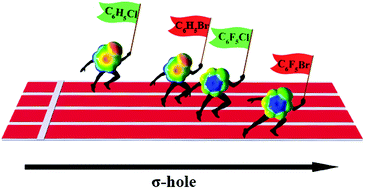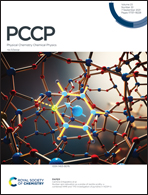σ–Hole activation and structural changes upon perfluorination of aryl halides: direct evidence from gas phase rotational spectroscopy†
Abstract
Enhancement of the σ–hole on the halogen atom of aryl halides due to perfluorination of the ring is demonstrated by use of the Extended Townes−Dailey (ETD) model coupled to a Natural Atomic Orbital Bond analysis on two perfluorinated aryl halides (C6F5Cl and C6F5Br) and their hydrogenated counterparts. The ETD analysis, which quantifies the halogen p-orbitals populations, relies on the nuclear quadrupole coupling constants which in this work are accurately determined experimentally from the rotational spectra. The rotational spectra investigated by Fourier-transform microwave spectroscopy performed in supersonic expansion are reported for the parent species of C6F5Cl and C6F5Br and their 13C, 37Cl or 81Br substituted isotopologues observed in natural abundance. The experimentally determined rotational constants combined with theoretical data at the MP2/aug-cc-pVTZ level provide precise structural information from which an elongation of the ring along its symmetry axis due to perfluorination is proved.



 Please wait while we load your content...
Please wait while we load your content...